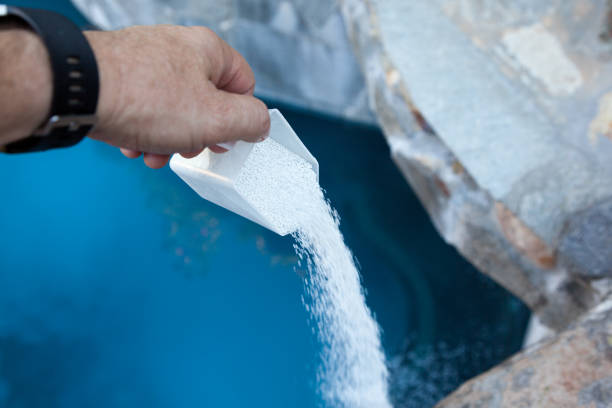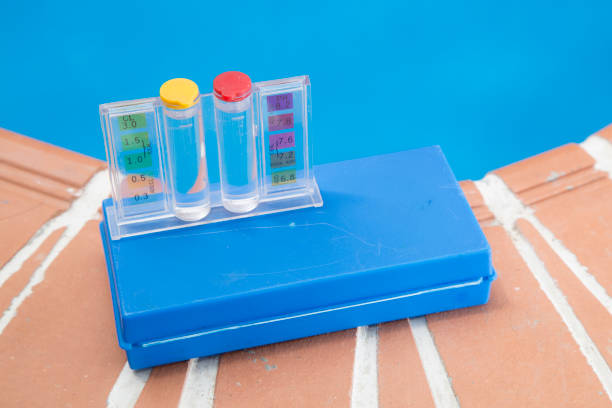In the realm of water treatment and sanitation, Chlorine Residuals play a pivotal role in ensuring the safety and purity of water supplies. With concerns about waterborne illnesses and contaminants on the rise, comprehending the significance of Chlorine Residuals is essential for safeguarding public health. In this article, we delve into the depths of Chlorine Residuals: what they are, why they matter, and how to effectively maintain them to uphold optimal sanitization standards.
What are Chlorine Residuals?

Chlorine Residuals refer to the remaining chlorine concentration in water after the initial disinfection process. Chlorine, a potent disinfectant, is commonly used in water treatment facilities to kill harmful bacteria, viruses, and other pathogens. However, maintaining a residual chlorine level is crucial for sustained protection against microbial contamination in distribution systems.
Importance of Chlorine Residuals in Sanitization
Understanding the importance of Chlorine Residuals in sanitization is paramount. Chlorine acts as a barrier, preventing the regrowth of pathogens within the water distribution network. Without adequate residual chlorine levels, there is a heightened risk of microbial proliferation, leading to potential outbreaks of waterborne diseases such as cholera, typhoid, and gastroenteritis. Thus, maintaining effective Chlorine Residuals is fundamental to ensuring the safety and quality of drinking water.

Factors Affecting Chlorine Residuals
Several factors can influence Chlorine Residual levels, including water temperature, pH, organic matter content, and contact time. Warmer temperatures accelerate chlorine decay, necessitating higher chlorine doses to maintain adequate residuals. Likewise, fluctuations in pH levels can alter chlorine effectiveness, with optimal residual levels typically achieved at neutral pH. Moreover, the presence of organic compounds can consume chlorine, reducing residual levels and compromising sanitization efficacy.
Measuring Chlorine Residuals
Accurate measurement of Chlorine Residuals is essential for assessing water quality and determining the effectiveness of disinfection processes. Common methods for measuring residuals include colorimetric tests, titration, and online monitoring systems. Regular monitoring ensures that chlorine levels remain within the recommended range for effective sanitization, providing timely intervention if adjustments are required.

Maintaining Effective Chlorine Residuals
Maintaining effective Chlorine Residuals requires a proactive approach to water management. Water treatment facilities must carefully calibrate chlorine dosing systems to account for variations in water quality and demand. Routine maintenance of equipment and infrastructure is also crucial to prevent system failures and ensure consistent disinfection performance. Additionally, continuous monitoring and analysis of residual chlorine levels enable operators to promptly identify and address any deviations from target values.
Challenges and Solutions
Despite the benefits of Chlorine Residuals in sanitization, challenges may arise in maintaining optimal levels, particularly in large distribution systems or areas with high demand. Factors such as pipe corrosion, hydraulic conditions, and intermittent water flow can impact chlorine distribution and decay rates, posing challenges to maintaining uniform residual levels throughout the network. Implementing strategic chlorination practices, such as booster stations and breakpoint chlorination, can help overcome these challenges and optimize residual chlorine distribution.

Environmental Considerations
While Chlorine Residuals are effective in disinfection, concerns about their environmental impact have prompted the exploration of alternative disinfection methods. Chlorine byproducts, such as trihalomethanes (THMs), can form when chlorine reacts with organic matter in water, posing potential health risks. Consequently, water treatment facilities are increasingly adopting alternative disinfection technologies, such as ultraviolet (UV) irradiation and ozone treatment, which offer effective pathogen control without the formation of harmful byproducts.
Community Engagement and Education
In promoting effective sanitization practices, community engagement and education are paramount. Public awareness campaigns highlighting the importance of Chlorine Residuals in safeguarding water quality can empower individuals to take proactive measures to protect their health. Additionally, providing resources and guidance on water conservation and pollution prevention can help mitigate the need for excessive chlorine usage, promoting sustainable water management practices.

Conclusion
Chlorine Residuals are a cornerstone of effective water sanitization, playing a crucial role in preventing waterborne diseases and ensuring public health. By understanding the factors influencing Chlorine Residual levels and implementing proactive maintenance strategies, water treatment facilities can uphold optimal sanitization standards and safeguard water quality. Furthermore, embracing innovative disinfection technologies and fostering community engagement are essential steps towards achieving sustainable water management practices and ensuring the availability of safe and clean drinking water for all.
In conclusion, Chlorine Residuals: Understanding and Maintaining Effective Sanitization are central to preserving public health and water quality, making it imperative for stakeholders to prioritize the management and maintenance of Chlorine Residual levels in water treatment processes.


I don’t think the title of your article matches the content lol. Just kidding, mainly because I had some doubts after reading the article.
Thanks for sharing. I read many of your blog posts, cool, your blog is very good.
I don’t think the title of your article matches the content lol. Just kidding, mainly because I had some doubts after reading the article.
Thank you, your article surprised me, there is such an excellent point of view. Thank you for sharing, I learned a lot.
Can you be more specific about the content of your article? After reading it, I still have some doubts. Hope you can help me.
Thanks for sharing. I read many of your blog posts, cool, your blog is very good.
Thanks for sharing. I read many of your blog posts, cool, your blog is very good.
Your article helped me a lot, is there any more related content? Thanks!
Your article helped me a lot, is there any more related content? Thanks!
Thanks for sharing. I read many of your blog posts, cool, your blog is very good. бнанс Реферальний код
Thanks for sharing. I read many of your blog posts, cool, your blog is very good.
Your point of view caught my eye and was very interesting. Thanks. I have a question for you.
I don’t think the title of your article matches the content lol. Just kidding, mainly because I had some doubts after reading the article.
I don’t think the title of your article matches the content lol. Just kidding, mainly because I had some doubts after reading the article.
Thank you for your sharing. I am worried that I lack creative ideas. It is your article that makes me full of hope. Thank you. But, I have a question, can you help me?
Thank you for your sharing. I am worried that I lack creative ideas. It is your article that makes me full of hope. Thank you. But, I have a question, can you help me?
Thanks for sharing. I read many of your blog posts, cool, your blog is very good.